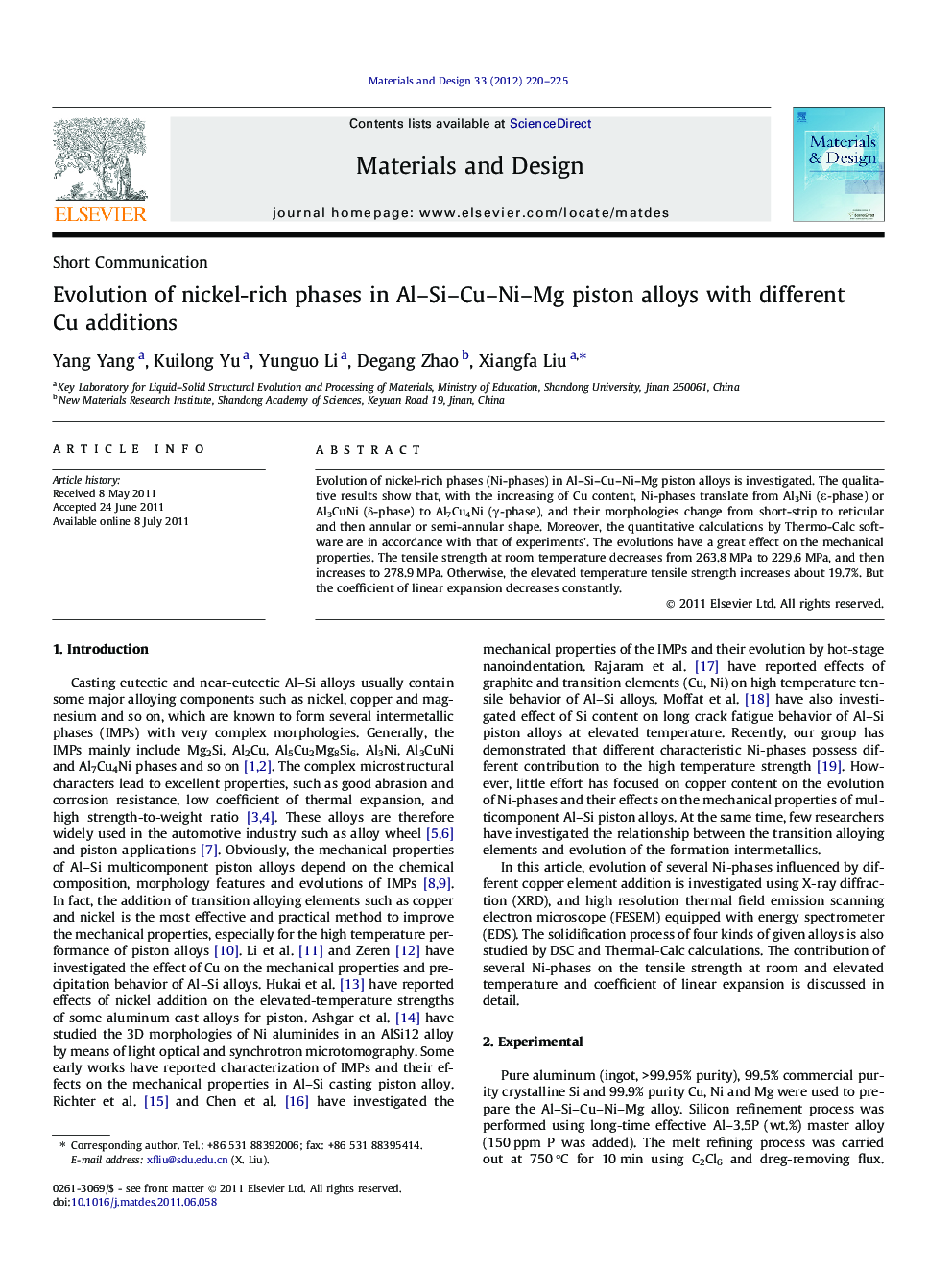| Article ID | Journal | Published Year | Pages | File Type |
|---|---|---|---|---|
| 831133 | Materials & Design (1980-2015) | 2012 | 6 Pages |
Evolution of nickel-rich phases (Ni-phases) in Al–Si–Cu–Ni–Mg piston alloys is investigated. The qualitative results show that, with the increasing of Cu content, Ni-phases translate from Al3Ni (ε-phase) or Al3CuNi (δ-phase) to Al7Cu4Ni (γ-phase), and their morphologies change from short-strip to reticular and then annular or semi-annular shape. Moreover, the quantitative calculations by Thermo-Calc software are in accordance with that of experiments’. The evolutions have a great effect on the mechanical properties. The tensile strength at room temperature decreases from 263.8 MPa to 229.6 MPa, and then increases to 278.9 MPa. Otherwise, the elevated temperature tensile strength increases about 19.7%. But the coefficient of linear expansion decreases constantly.
Graphical abstractNi-rich phases in the alloys translate from ε-phase into δ-phase, and then precipitate as γ-phase with increasing Cu content. And the elevated temperature tensile strength increases from 78.1 MPa to 93.5 MPa. But the room temperature tensile strength decreases from 263.8 MPa to 229.6 MPa, and then increases to 278.9 MPa.Figure optionsDownload full-size imageDownload as PowerPoint slideHighlights► Ni-rich phases in Al–Si alloy translate from ε or δ into γ-phase with increasing Cu. ► Thermo-Calc calculations are in good accordance with the experimental results. ► Evolution of α-Al cause the “V-type” changes tendency of UTS at room temperature. ► UTS at elevated temperature increased about 19.7% due to evolution of Ni-rich phases.
